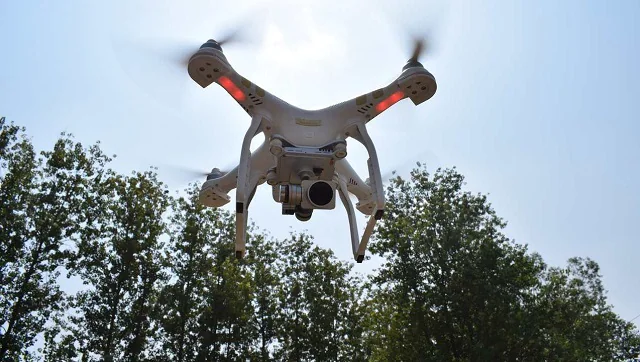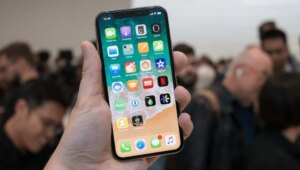Sheldon PintoMar 04, 2021 11:28:39 IST
The Narzo 30 Pro is part of the second instalment of the budget gaming series phones from Realme. The first flagship Narzo device was the 20 Pro. Despite its attention-grabbing features (like 65 W fast-charging and that problematic 90 Hz display) it failed to impress me in my review mainly because the Realme 7 offered so much more with fewer drawbacks.
With the Narzo 30 Pro, there have been a few additions and a few subtractions, and I’m pretty sure these had to be made to make way for a 5G-enabled chipset (or the “5G tax” as I love to call it). Gone is the (38 minute) 65 W Dart charging system, now replaced by a 30 W charger. But Realme had its reasons and claims that it was done so that it could offer a bigger, 5000 mAh battery for its customers. Something that’s been added to the mix is a 120 Hz refresh rate display that replaces the old 90 Hz unit from the 20 Pro. Another improvement that is rather subjective, is the more matte and subtle gamer-centric finish that replaces the rather polished, glossy design of the 20 Pro.
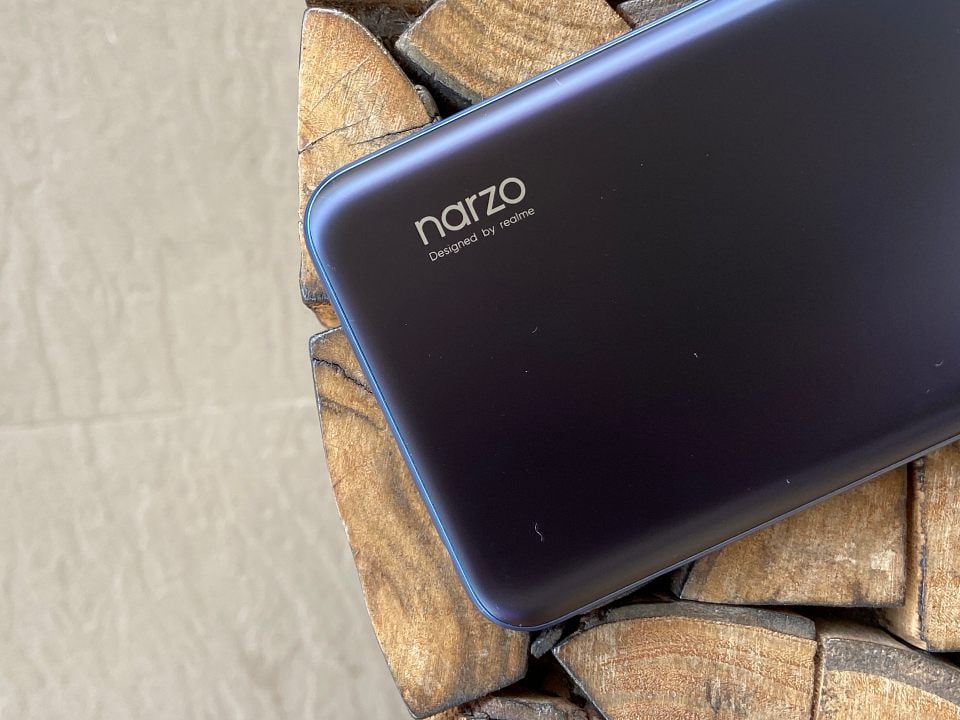
The Narzo 30 Pro does not really stand out, and is quite subtle in its dual-tone “Sword Black” finish. Image: Tech2/Sheldon Pinto
New does not necessarily mean better. And so far, I’ve not been a fan of the MediaTek Dimensity 800U chipset in Realme 7 (Review). So, I put the Realme Narzo 30 Pro through its paces for a week and my results were a bit surprising. But as always, there were a few hiccups. Keep those in mind before you take — or dare to — the leap and buy one.
Subtle design
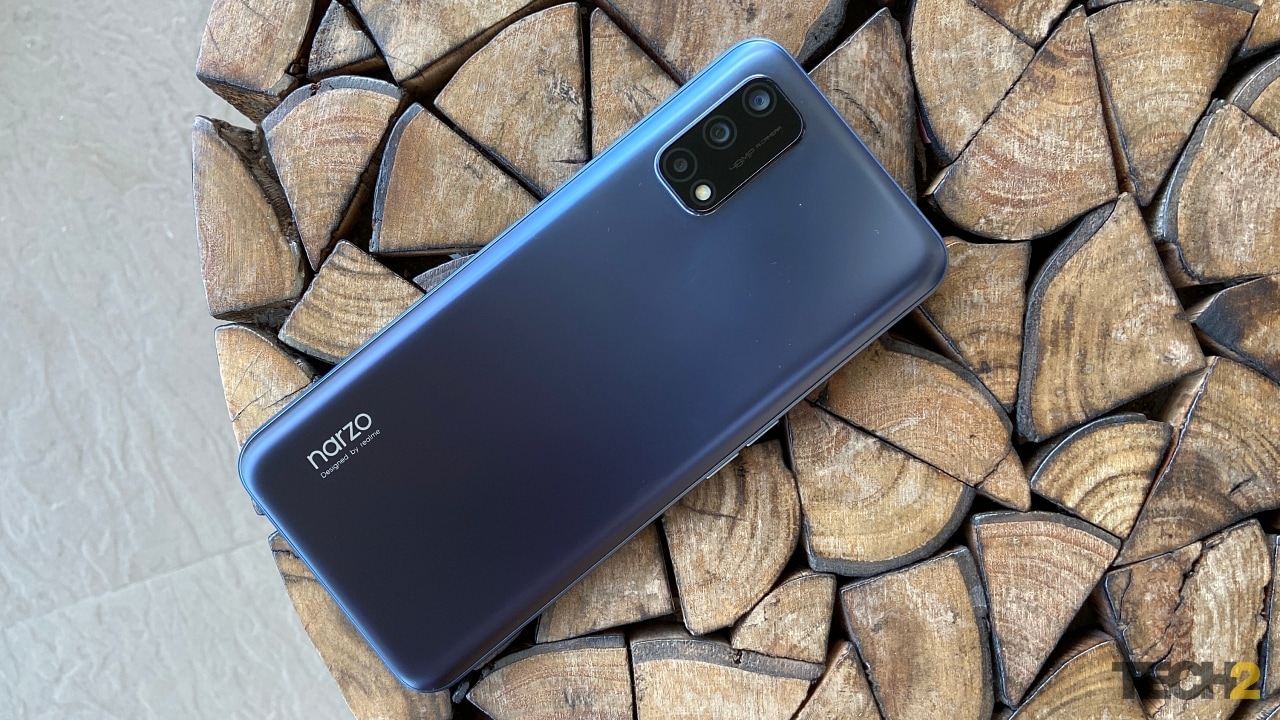
As expected, the phone’s frame and curved back are made of plastic. Image: Tech2/Sheldon Pinto
Given that it’s a device targeted at the gaming crowd, the Narzo 30 Pro does not really stand out, and is quite subtle in its dual-tone “Sword Black” finish. As expected, the phone’s frame and curved back are made of plastic. It was given a matte finish to keep away fingerprints and grime, but is not successful at accomplishing this, as the phone is a dust and fingerprint magnet. It gets quite messy after a few minutes of holding it.

It feels quite chunky (at 9.1 mm thickness) and heavy at 192 grams, which is probably down to the large 5,000 mAh battery. Image: Tech2/Sheldon Pinto
The same grimy mess makes its way onto the glass screen on the front, and wiping off those prints takes quite a bit of effort. It also feels quite chunky (at 9.1 mm thickness) and heavy at 192 grams, which is probably down to the large 5,000 mAh battery.
A crazy-fast 120 Hz display
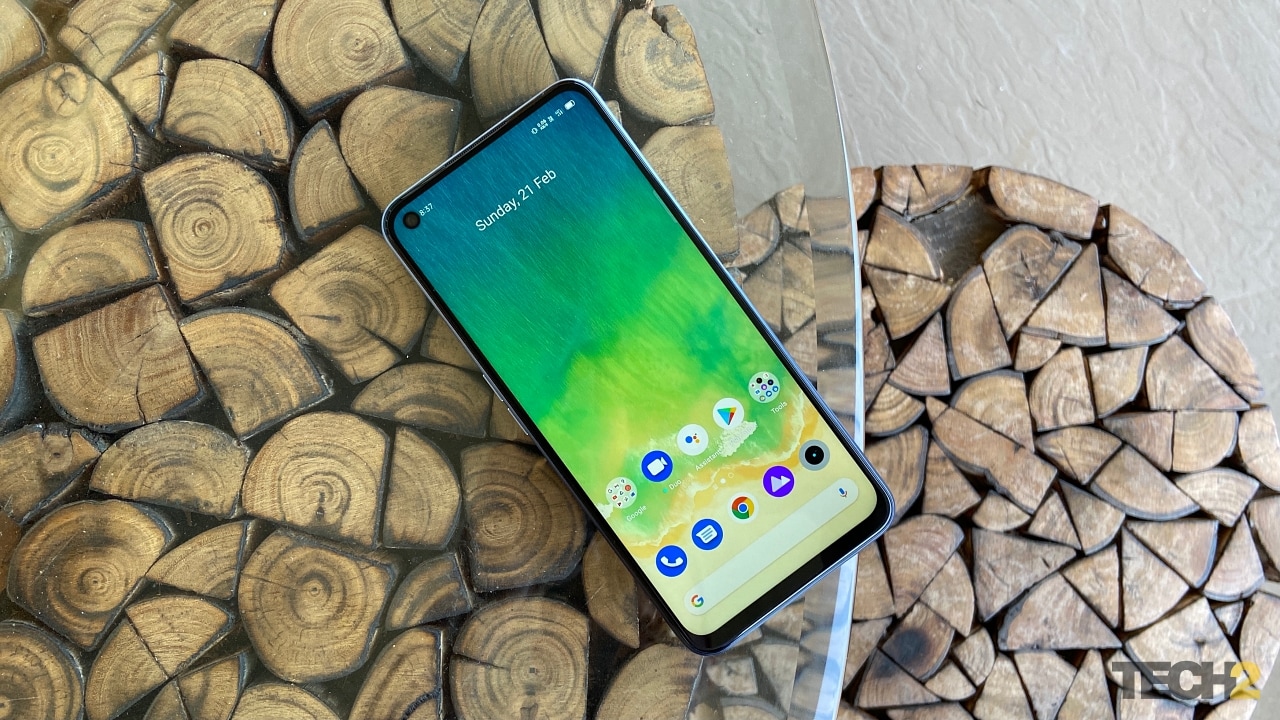
It can withstand the bright afternoon sun and is perfectly legible in all sorts of lighting conditions. Image: Tech2/Sheldon Pinto
Realme has upped its game by offering a 120 Hz FHD+ LCD hole-punch display, and it’s a lovely one with close-to-natural colours. Even better, it does not have that ghosting effect I witnessed when reviewing the Poco X3 — the only other smartphone to feature a similar 120 Hz display in this segment. It can withstand the bright afternoon sun and is perfectly legible in all sorts of lighting conditions. More importantly, the colours also remain intact when viewing the display off-centre. All-in-all, it’s a damn good budget display! My only gripe with it is that chunky chin at the bottom.
Software that keeps up with that fast display
Given that most mobile games barely scraped the 60 fps mark because of the chipset and developer optimisation issues, the 120 Hz refresh rate was not too useful when playing games. Where it did come of use, is when I interacted with the software.
Realme UI is still stuck on Android 10 and we have yet to receive any solid news about its jump to Realme UI 2.0 (with Android 11). While the brand had promised updates for its recently-announced handsets like the X7 and the X7 Pro, we have yet to see those updates make their way to the smartphones.
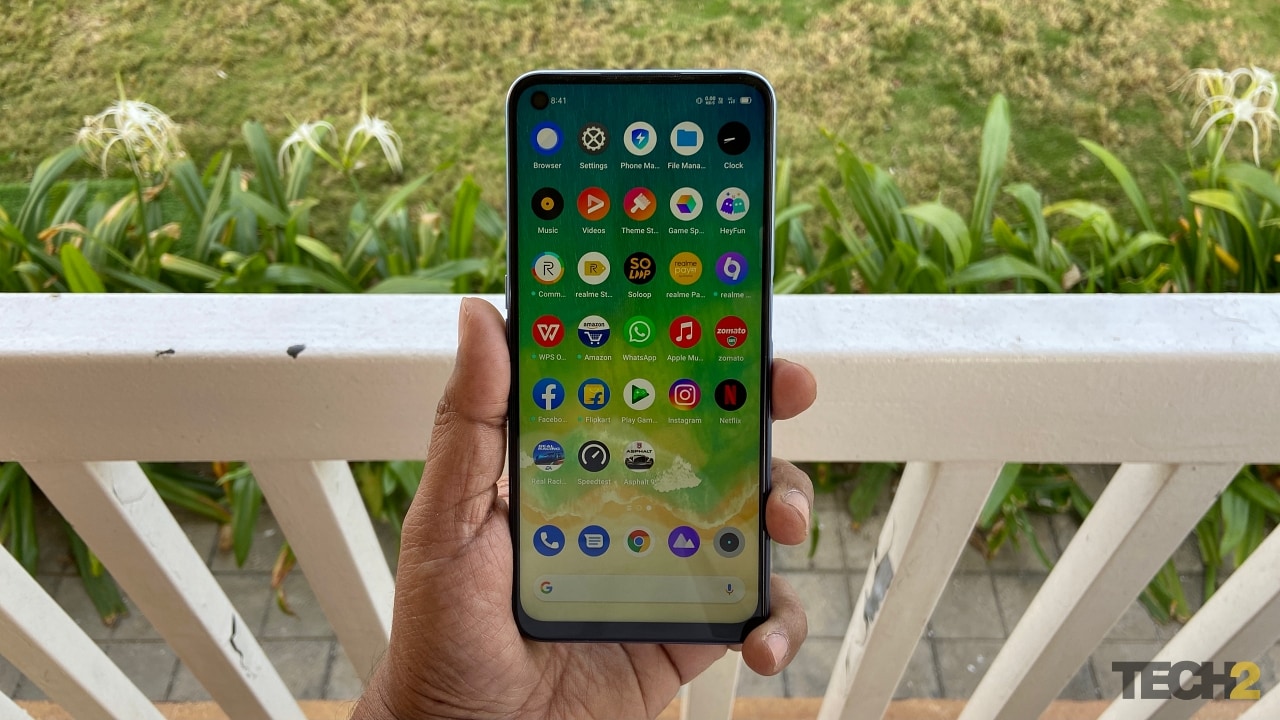
It still lacks the crazy customisation that ColorOS 11 (with Android 11) delivers. Image: Tech2/Sheldon Pinto
Regardless, Realme UI 1.0 worked just fine and kept things running smooth and fluidly, without any hiccups. I tested out the 8 GB + 128 GB combo, so things were as smooth as on the Realme X7, with added fluidity thanks to the 120 Hz display. Given how light Realme UI feels in comparison to its counterpart — Oppo’s ColorOS — I’m sure it won’t have any issues on the base 6 GB RAM model as well.
It still lacks the crazy customisation that ColorOS 11 (with Android 11) delivers, but I’m sure most of those customisations will make their way onto the phone with Realme UI 2.0.
Performance is not bad
The MediaTek Dimensity 800U chipset is pitched as a competitor to the older Qualcomm Snapdragon 765 or the more recent 750 chipset, both of which also come with integrated 5G modems for faster data speeds. My first experience with the 800U on the X7 left me with a bad aftertaste, and it’s a bit of the same with the 30 Pro.
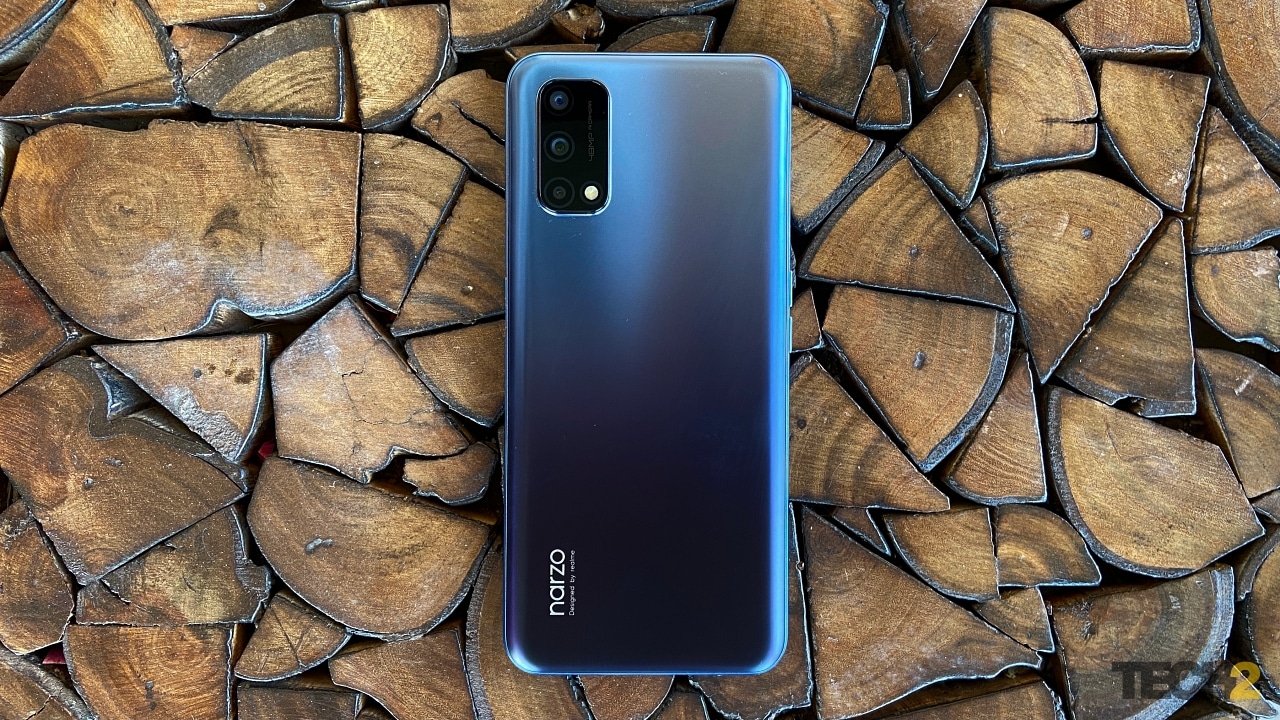
Casual gaming titles like Blades of Brim, Fruit Ninja 2 and the lot worked just fine. Image: Tech2/Sheldon Pinto
You can blame it on Realme’s choice of a MediaTek chipset, or the lack of support from game developers. Either way, you will be left wanting for more because Qualcomm’s alternatives get better support, which means you can crank up the graphics settings.
Still, the performance is not bad. More importantly, touch sensitivity was not a problem like on the Narzo 20 Pro. Call of Duty: Mobile allowed for a maximum of Medium graphics and High frame rate with almost every other effect (including rag-doll) not supported.
For the less violent titles like Real Racing 3 and Asphalt 9 Legends, the games ran smoothly at a low, but steady frame-rate. Gameloft did not open up 60 fps support for Asphalt 9 Legends, but the game chugged along just fine (felt like 30 fps) at “High Quality” graphics settings with some minor hiccups.
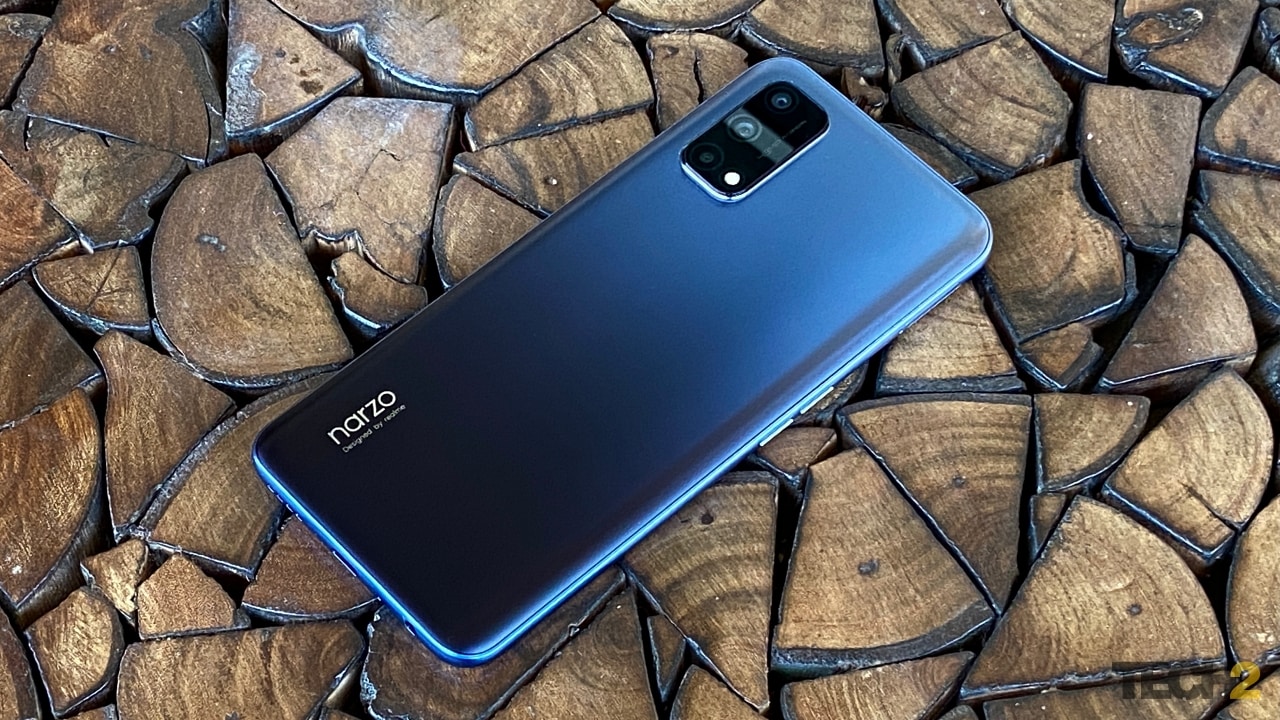
For the less violent titles like Real Racing 3 and Asphalt 9 Legends, the games ran smoothly at a low, but steady frame-rate. Image: Tech2/Sheldon Pinto
Casual gaming titles like Blades of Brim, Fruit Ninja 2 and the lot worked just fine.
What did not impress at all was the haptic vibration motor. The rudimentary motor on the Narzo 30 Pro was not accurate and is a far cry from the Z Shocker Haptics that are available on the Poco X3.
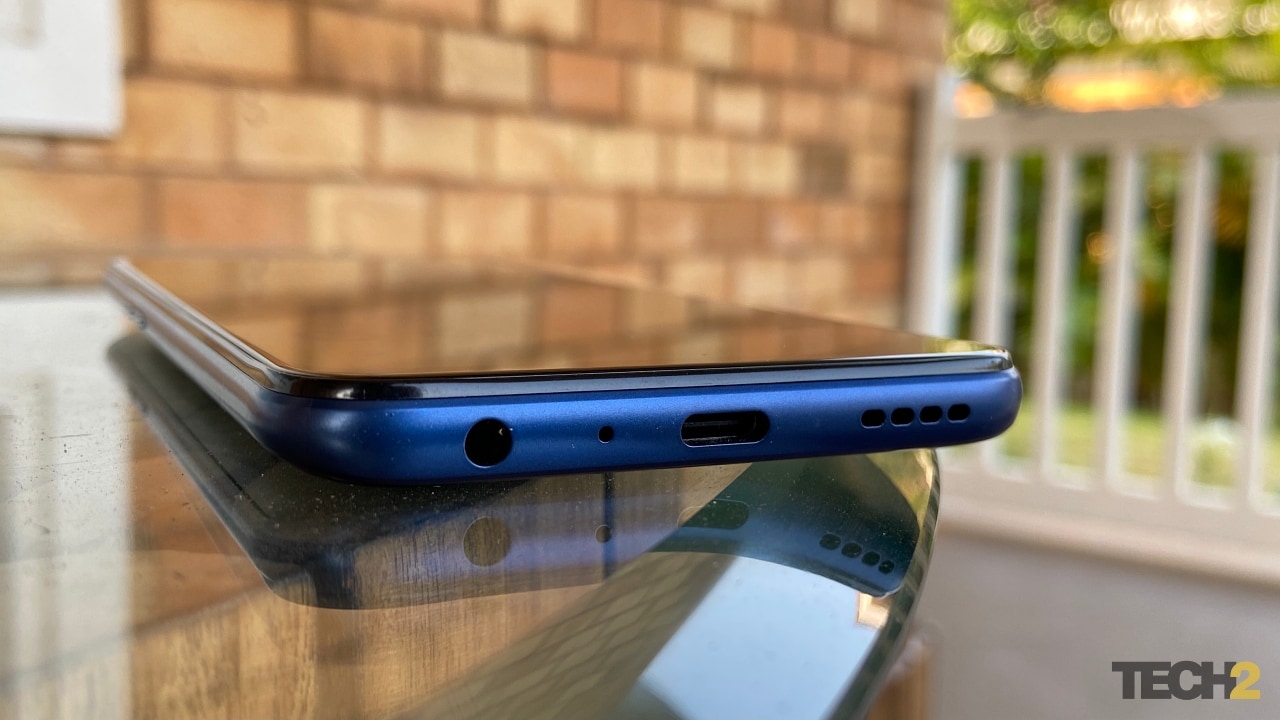
The rudimentary motor on the Narzo 30 Pro was not accurate. Image: Tech2/Sheldon Pinto
The audio quality, despite its single, bottom-firing speaker, was quite good. It cannot hit the bass frequencies, but did not crack at high volumes either. A dual speaker setup like on the Poco X3 would have made more sense for watching movies and the stereo separation would have done wonders to improve the gaming experience, making it immersive instead of being one-sided. If you don’t like the speakers, Realme has included a regular 3.5 mm headphone jack.
A good camera for budget gaming phone
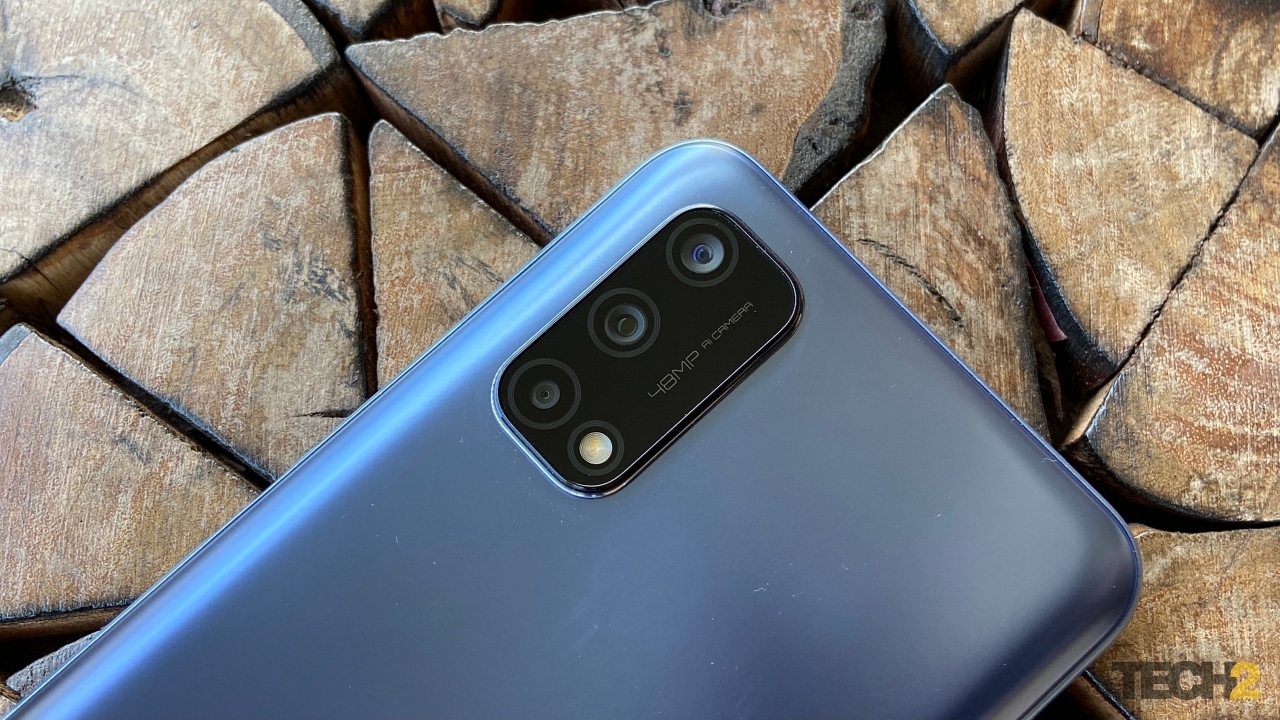
This camera definitely has a problem with drawing details from the shadows, and this became quite evident once the sun set. Image: Tech2/Sheldon Pinto
In broad daylight, photos showed a good level of detail, with warm colour tones. Results from the ultra-wide angle camera were also quite good, and only lacked a bit of sharpness because it features a fixed focus lens. The macro camera is not really useful and shoots dramatic photos that almost look like paintings. Selfies also looked quite sharp and the same can be said about the portrait mode photos shot using the rear camera; they feature accurate edge detection.
In the shadows or indoors, things weren’t as good. Detail takes a hit in most cases, with a severe lack of texture. Thankfully, photos did not end up looking like paintings. This camera definitely has a problem with drawing details from the shadows, and this became quite evident once the sun set.
Click here to see the camera samples:
The noise levels go up and the noise reduction results in flat textures. Things are fine as long your scene or subject has an artificial source of bright light. Thankfully, there’s a night mode that does a better job, although not perfectly. It does a good job of balancing out the bright spots and gets you cleaner images with bumped up sharpness and abnormally high contrast, but I can live with these.

Selfies looked quite sharp and the same can be said about the portrait mode photos shot using the rear camera. Image: Tech2/Sheldon Pinto
When it came to video, the 1080p @30 fps mode shot the most detailed videos in all kinds of lighting conditions. The 1080 @60 fps is good, just that it does not capture enough detail even in broad daylight. 4K @30 fps looked quite detailed, but just like the X7, it boosts the saturation to abnormally high levels. I literally had to peep over the viewfinder to check that it was capturing the same scene in front of me.
If I had to pick between the Poco X3 or the Realme Narzo 30 Pro, I think both are on par. The Poco shoots photos with cooler tones and a bit more detail. But the older Narzo 20 Pro certainly shot better still images compared to both, which is a bit surprising.
Easily gets you through a day… and then some
Given that the 30 Pro cannot play games at the highest settings too well, I often ended up cranking down the settings, and that resulted in better battery life. At the end of a day, I still had about 40 percent charge left in the tank that was enough to get me halfway into the second day.
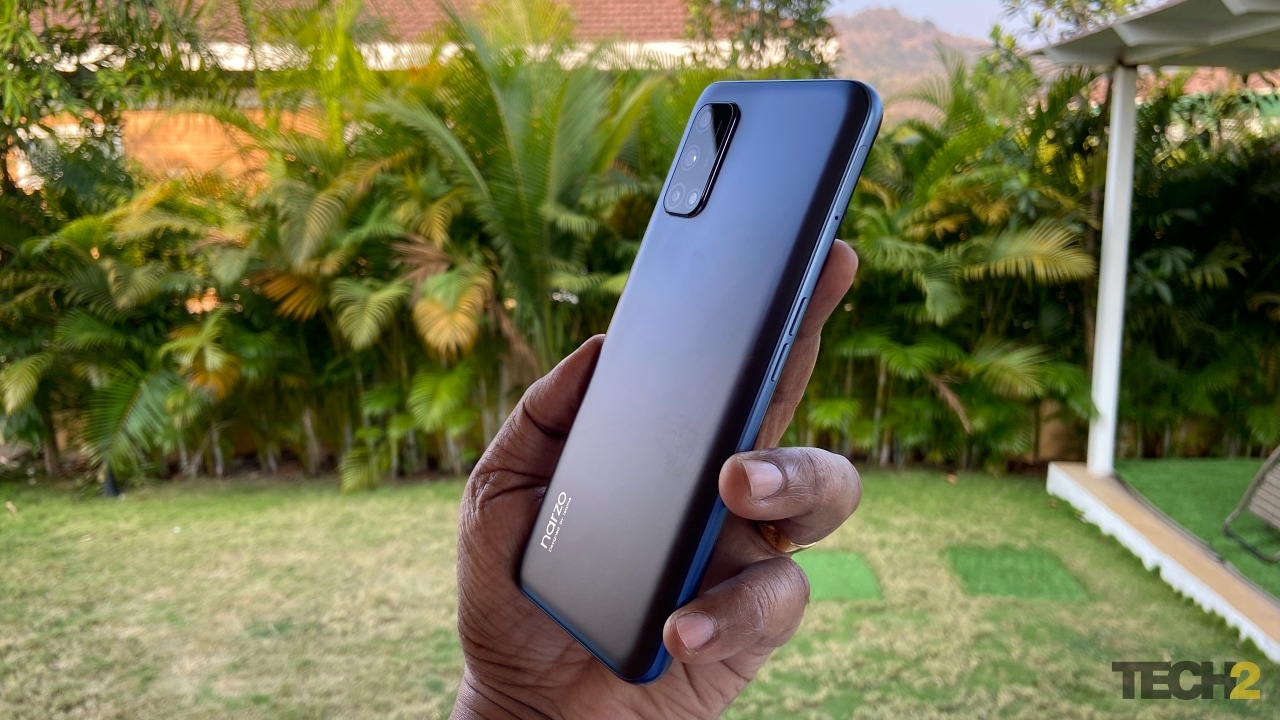
Given that the 30 Pro cannot play games at the highest settings too well, I often ended up cranking down the settings, and that resulted in better battery life. Image: Tech2/Sheldon Pinto
Charging speeds going down from 65 W to 30 W may seem like a downgrade to many, but it’s not all that bad, given that the bigger 5,000 mAh battery (over the 20 Pro) charges up in a little over an hour and will last longer as well. And all of my usage was with the display’s refresh rate set to 120 Hz; which means you can get a few hours more by setting it to 60 Hz.
Should you buy one?
Realme is literally giving you a mid-range chipset (also present in the Realme X7 priced at Rs 19,999) at a price tag that’s identical to the best budget gaming smartphone of 2020, Poco X3 (Review). At Rs 16,999, it also delivers 5G (whenever it’s available), which is something that no other smartphone at this price point does. It’s a capable budget smartphone with 5G.
Still, if I had to pick between the two budget gaming machines, I’d be happier with Poco X3, solely because it’s a solid gaming smartphone through and through.
It may be chunky, but it has all the liquid-cooling tech it needs when you crank up the graphics. There’s a massive 6,000 mAh battery that will let you keep your gaming sessions going for a long time, and a capable 120 Hz display (with better 240 Hz touch sampling). There’s also an immersive and powerful dual stereo speaker setup that literally vibrates the damn phone!
Realme went all-out to deliver the first 5G gaming smartphone and to a degree, it did. It’s just that it compromises in the hardware that gamers actually want to include 5G, that won’t really matter for as long as you’ll keep this phone.






